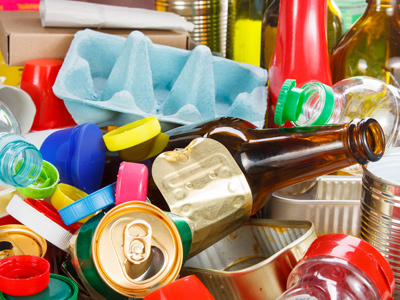Recycling and reusing appear in two threads that run through the GCSE geography syllabus - climate change and sustainability. There must be an international, national and local united response to the threat of global climate change and sustainable development must ensure that the environment is protected and that there are sufficient resources left for future generations.
Globalisation and industrialisation increases the amount of waste that is produced. As the wealth of a country increases, the demand for consumer items also increases. Waste is produced as a result of the manufacturing of the items, from the packaging and when the items reach the end of their useful life. Manufacturing any item requires energy so the more items that are manufactured, the greater the energy costs.
Most energy comes from non-renewable sources that release greenhouse gases into the atmosphere so any reduction in the amount of goods manufactured will have a positive impact on the human-made element of climate change. The more goods that are manufactured now means that resources will be used up and unavailable to future generations. A reduction in manufacturing therefore also aids with sustainability.
On the other hand, manufacturers don't want a reduction in the volume of items they are making as it means reduced profits. If an industry is the main source of income for an emerging economy, the government will not want a reduction in the manufacturing volume either. This gives rise to a conflict of interest and so international cooperation is not always possible.
At a national level, the British government sets recycling targets for local councils which they can try to achieve by encouraging both recycling and reusing items where possible. Recycling and reusing is not something that can be forced onto individuals at a local level. Local councils provide separate bins for waste and materials that can be recycled as well as recycling collection points. This relies on the population to make a small effort to sort out their waste into items that can be recycled and those which can't. Local byelaws can be established concerning recycling but it is only really practical to direct these at local businesses. Schools and communities also play their part by putting in place as many recycling measures as they can as well as educating people about the need for recycling and reusing items. There are people for whom recycling is too much of a chore, so there will always be a small proportion of potentially recyclable materials lost to landfill.
Many of the larger retailers have zero waste to landfill policies. They aim to recycle all of their waste and avoid using materials that cannot be recycled. They carry out an audit of absolutely every material that they use to find out when and where waste is being created. They can then plan strategies to reduce it.
Supermarkets are known for wasting a lot of perfectly good food just because it has gone past its 'sell by' date. Non-animal products can be sent for composting but this is not widely practised. Most of it is simply thrown away. Some people believe that throwing perfectly edible food away is wrong and have set up businesses to buy it from supermarkets and re-sell it.
Another method of recycling and reusing materials that would otherwise end up in landfill is called upcycling. This involves taking objects like old baths, industrial pallets, snowboards and a huge variety of other items and then modifying them to be used as lamps, chairs, sofas, tables, garden seats and other household items.








